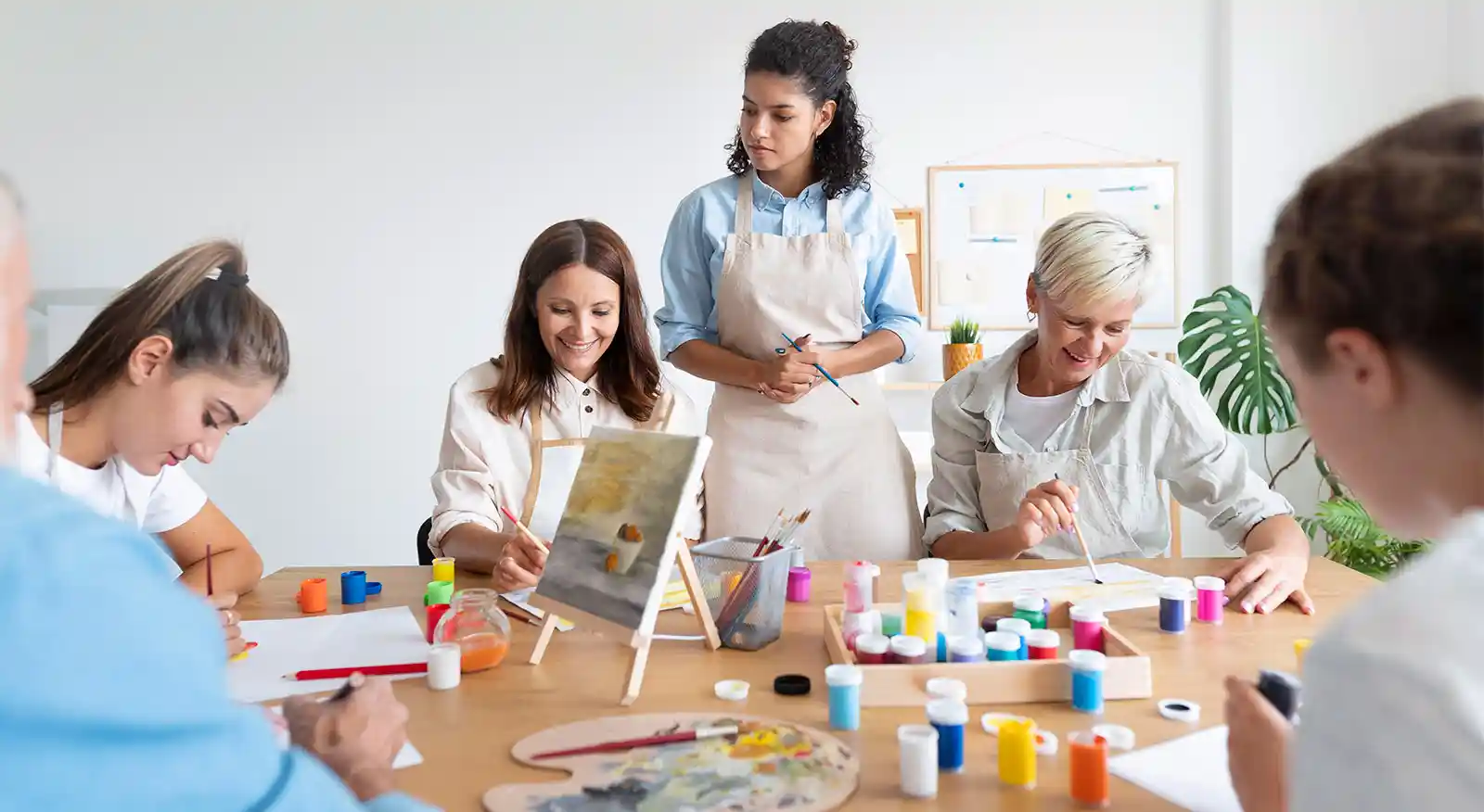
Discover Art as a Powerful Team-Building Tool in Singapore
Team-building activities are essential for fostering collaboration, improving communication, and enhancing creativity within groups. While traditional exercises like trust falls or problem-solving games have their place, one of the most impactful and unique ways to strengthen a team is through art. Art encourages creativity, promotes self-expression, and fosters a sense of unity, making it an ideal tool for team-building in any environment, whether it’s a corporate setting, a school, or a community group.
In this article, we’ll explore how art can serve as a powerful team-building tool and how organizations can use creative art-based activities to improve collaboration and boost morale.
The Power of Art in Team Building
Art engages the mind in ways that few other activities can. It requires focus, creativity, and cooperation—all essential qualities for a successful team. Here’s why art can be such an effective team-building activity:
- Encourages Creative Thinking
Art challenges participants to think outside the box, which can enhance problem-solving abilities within teams. By using creative exercises, individuals are pushed to come up with innovative solutions, helping the team approach challenges with fresh perspectives. - Promotes Collaboration
Many art projects, such as mural painting or group sculptures, require collaboration and joint decision-making. Working together toward a common artistic goal helps to break down barriers between team members and fosters a sense of camaraderie. Everyone’s contribution matters, and success is achieved through teamwork, not individual achievement. - Enhances Communication
Art projects often require constant communication and feedback. Team members must express their ideas and listen to others’ suggestions in order to create a cohesive finished product. This kind of open communication strengthens relationships and helps to develop mutual respect. - Boosts Morale
Engaging in artistic activities provides a fun and non-competitive outlet for expression. When employees, students, or group members engage in activities they enjoy, it can boost their mood, reduce stress, and increase overall morale. High morale often leads to a more productive and harmonious team. - Builds Trust
Art encourages vulnerability, as individuals may not always be confident in their artistic abilities. When everyone takes part in the creative process, it helps build trust among team members. Supporting each other during an art activity can translate into improved relationships outside of the creative space.
How Art Can Be Used in Team-Building Activities
There are countless ways that art can be integrated into team-building activities. Below are a few ideas for incorporating art into your team-building exercises, whether you’re in a corporate setting, educational environment, or community group.
1.Art Jamming Workshops
Art jamming is a fun and relaxed way for team members to engage in creative expression. During an art jamming session, participants are given free reign to create their own pieces of art, whether it’s painting, drawing, or other mediums. This encourages individuality while still creating a sense of shared space and experience. Participants can either work on their own pieces or collaborate on a single large artwork, like a mural.
Why It’s Effective:
Art jamming fosters creativity, allows individuals to relax, and provides a non-judgmental environment where everyone can feel free to express themselves. It’s a great way to start or end a team-building session.
2. Collaborative Mural Painting
A team mural is a fantastic way for individuals to contribute to a shared goal while expressing their creativity. Teams can work together to design and paint a mural that represents their values, goals, or even personal experiences. This collaborative activity requires input from every team member and encourages communication and coordination.
Why It’s Effective:
Working on a mural requires teamwork and mutual decision-making, making it a powerful way to reinforce collaboration and creative expression. It also leaves the team with a lasting visual reminder of their teamwork and success.
3. Team Sculptures
Sculpture-making activities, such as working with clay or building structures with everyday materials, promote team collaboration and creativity. Teams can be given a theme or a set of materials to create something meaningful together, such as a sculpture that represents their company or group mission.
Why It’s Effective:
Sculpture-making encourages hands-on teamwork and forces individuals to work together in solving problems and coordinating their efforts. It can also help individuals learn to trust each other and combine their different skill sets.
4. Painting to Music
An interesting twist on traditional painting is to paint while listening to music. In this activity, teams listen to a specific genre or style of music and create art based on how the music makes them feel. It’s a fun and expressive way to encourage collaboration through a shared emotional experience.
Why It’s Effective:
This activity fosters creative thinking, helps team members tune into their emotional responses, and encourages them to think abstractly. It’s a great way to build an emotional connection within the team while using art as a form of expression.
5. Art-Based Problem-Solving Exercises
Art-based problem-solving exercises involve using creativity to address specific challenges or scenarios. For example, teams may be asked to design a “problem-solving” object using only certain materials. The process of coming up with ideas and executing them together fosters innovation and teamwork.
Why It’s Effective:
By applying art to problem-solving, teams learn to think creatively and use different approaches to address challenges. It helps individuals work together to find solutions while also thinking outside the box.
The Benefits of Art in Team Building
- Improved Creativity
Engaging in artistic activities stimulates creative thinking, which can lead to innovative ideas and solutions. When teams are given the freedom to express themselves artistically, they break free from conventional thinking, leading to fresh ideas that can be applied to other areas of their work or personal life. - Better Relationships
Art creates a relaxed environment where people can bond over shared activities. This promotes better communication and understanding, leading to stronger interpersonal relationships among team members. As a result, the team is more cohesive and better equipped to handle challenges. - Increased Emotional Intelligence
Art activities promote emotional intelligence by encouraging participants to express their feelings, reflect on their emotions, and understand the emotions of others. This increases empathy and helps teams develop a deeper understanding of one another’s perspectives. - Heightened Team Morale
By providing a fun and engaging activity, art improves team morale and boosts positivity. The enjoyable nature of art-based activities allows individuals to relax, de-stress, and enjoy each other’s company in a low-pressure setting.
